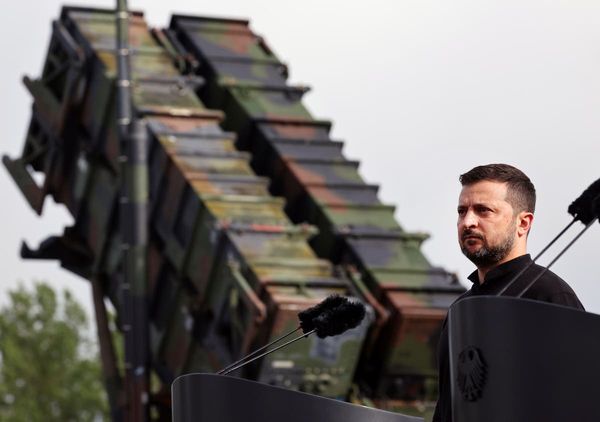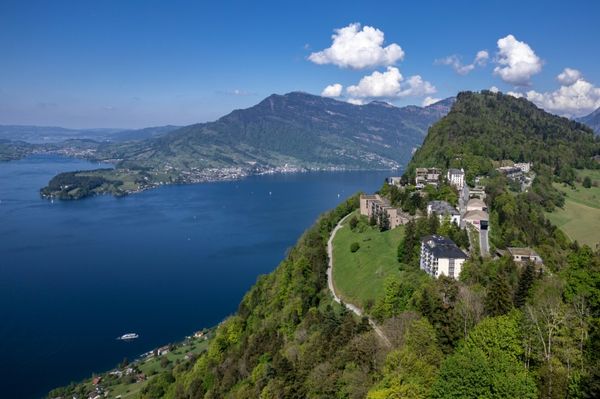
In 1976, Hiroshi Sugimoto set out to bring a taxidermied polar bear back to life. He had seen one on display in a diorama at the American Natural History Museum in New York (he has lived there and in Toyko since 1974). Finding all its stuffed animals and their realistic painted backdrops irresistible, he located some cumbersome 19th-century photography apparatus, the kind that would have been used when the dioramas were made, and photographed the scenes using a 20-minute exposure.
The giant, pristine black and white silver gelatin prints appear at first to be panoramic vistas of wildlife – but the details slowly unravel and betray them. The carnivorous polar bear, lurching towards its dead prey lying in a pool of blood on crisp snow, is too groomed – even its toenails looked polished. It all looks a bit off. For Sugimoto the work was a success, though. He had made the polar bear look alive once more.
Now you can be the judge, at Sugimoto’s supersize survey show at the Hayward Gallery, which offers a set of visual conundrums, as the artist attempts to resurrect, revive and reanimate a bygone world through an intensive – and at times frankly eccentric – photographic process.
This was the beginning of Sugimoto’s journey as an artist and the start of his largest exhibition to date, covering five decades in which themes rebound and recur – the dioramas alone continued to preoccupy him for four decades. The real/fake dialectic is one of the central premises in the show, something that seems destined to perturb photography for ever.

It has continued to preoccupy Sugimoto too, as this exhibition also highlights images from his 1999 Portraits series – inspired by the displays of another major tourist attraction, London’s Madame Tussauds. Sugimoto was drawn to the sculpted wax likeness of Henry VIII, and the fact it was based in turn on a 16th-century portrait painting by Hans Holbein the Younger.
Sugimoto set about photographing various waxwork figures, restaging them against plain black backgrounds to throw the viewer off, and emulating the scale of traditional 16th-century portrait paintings. They are portraits of portraits, layers of representation compressed – Sugimoto loves a succinct expression. But as to whether they are “as good as real” (as Sugimoto has suggested even fake subjects can be when photographed with the right staging) is doubtful. They are certainly uncanny anachronisms.
Sugimoto is a master at creating an eerie ambience. Before you even get to the creepy waxwork portraits, you pass through the haunting series, called Theaters, that he began in the 1970s. A two-hour film, he realised, is just 172,800 still images. He tried to turn it into one. Each of the photographs in the series captures an entire film in a single exposure – a similar approach to representing an entire life or history in one image. In the darkened, chilly galleries the glow emanating from the photographed screens is UFO-like.
Unlike the stuffed animals and cold waxworks, these feel really alive. While they’re about the compression of time, there is also a feeling of being enamoured with the past and with architectural finery, as Sugimoto set up his camera at classical and abandoned theatres, opera houses and drive-in cinemas around the world. A few details give a clue of the time that has passed, such as flicks across a dark sky above a drive-in theatre in Union City, New Jersey. Getting these right was an incredible technical feat.
Yet for all their careful choreography and grandeur, after so many, the series becomes a little repetitive and methodical. A second series shot at Madame Tussauds is presented as the Chamber of Horrors, but feels unnecessary, both to the show and to Sugimoto’s work. In this series of small, straightforward photographs of the theatrical, gruesome scenes at the original Chamber of Horrors at the museum, depicting a clutch of murderers and psychopaths, it’s not clear where the actual artistry is – or why they’re in the exhibition, other than to provide a gimmick of gore. They sit uncomfortably with the rest of the show.

The sexy side of the show is in fact in a lesser known suite of photographs of curving abstract forms, in which Sugimoto set out to “carve with a camera”, surrounding actual carved objects, mathematical models, in scintillating aluminium, turning geometric theory into tangible object (using some advanced Japanese tech to produce them). The Onduloid is the show’s real starlet – a turning shape that fascinates Sugimoto, and takes his interests in composition, geometry and space in a new direction.
Upstairs things get weirder, a tour around some of Sugimoto’s most performative processes and experiments. The camera-less Lightning photographs are the closest to wilding out as Sugimoto gets, embracing the wabi-sabi and deliberately trashing sheets of film with electricity. Taking this even further, he also mixed his own sea water, and dunked film in it, before jabbing at it with electrical tools.
These works make you realise how tightly controlled and precise the other series are, unrelenting in their pursuit of an idea within a set of conditions. Sugimoto’s Seascapes, among his most famous works, are in a way the embodiment of this, their tonal grey scales turning the meeting of sky and sea into impeccable abstract works. Stilling the sea, Sugimoto seems capable of controlling the world with his camera.
Sugimoto is perhaps more of a 19th-century expeditionist than artist, relishing the physical challenge and feats of the camera. Time Machine plunges you into the past, contemplates survival, and questions our puny acts of preservation in the inevitable erasure of history.
It’s an incisive and clear presentation of Sugimoto’s work of the past five decades and a true reflection of an artist with an unfaltering devotion to his method and ideas of how to use the medium of photography – but so much so that at times the work is prone to pretension and indulgence. This exhibition exposes both sides of Sugimoto. Fans of his work, and those who salivate over clever concepts and abstruse techniques, will be enthralled.
• At Hayward Gallery, London, 11 October to 7 January 2024







